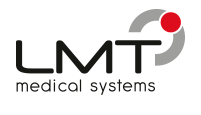Lung Point-of-Care Ultrasound Proves Valuable in Pediatric Emergency Settings
|
By MedImaging International staff writers Posted on 01 Nov 2023 |

Acute bronchiolitis is the leading cause of lower respiratory tract infections in infants, and its treatment can differ based on how severe it is. Given this variability in treatment, it's crucial to accurately gauge the severity of the disease, yet current tools for doing so have their limitations. Although imaging hasn't traditionally played a significant role in diagnosing or evaluating bronchiolitis, previous studies have looked into the use of lung ultrasound. A new study now indicates that point-of-care ultrasound (POCUS) could be beneficial for determining the severity of bronchiolitis in children when they arrive at the emergency room.
Researchers from the Children's Medical Center Dallas (Dallas, TX, USA) found that higher lung POCUS scores in cases of acute bronchiolitis correlated with a greater need for respiratory assistance, longer hospital stays, and more critical conditions. In the study, the researchers attempted to identify what lung ultrasound could reveal in infants who came to the pediatric emergency department with a diagnosis of acute bronchiolitis. They also looked at how POCUS scores related to the level of respiratory assistance needed at 12 and 24 hours, as well as the maximum level required during the hospital stay, the overall condition of the patient, and the duration of the hospital stay.
In their study, the researchers included data from 82 infants who were 12 months old or younger. They observed that average lung ultrasound scores were lowest for infants who were discharged, slightly higher for those admitted to the general ward, and highest for those sent to the intensive care unit (ICU). Specifically, the average scores were 1.18 for discharged infants, 4.34 for those on the general floor, and 10.84 for those in the ICU. They also found that the average ultrasound scores for needed respiratory support were higher at the 24-hour mark compared to the 12-hour mark. For varying levels of respiratory support—none, low, and high—the ultrasound scores were 1.22, 4.11, and 10.45, respectively.
The study also showed statistically significant differences in mean scores across all outcomes and levels of respiratory support. Additionally, the researchers found the average length of hospital stay was around 84.5 hours, with a Pearson correlation coefficient of 0.489 (p < 0.0001) when comparing the duration of stay and lung ultrasound scores. Despite these findings, the researchers have acknowledged that more research is needed to establish whether lung POCUS scoring is as reliable as existing methods or how it stacks up against traditional clinical assessments. Nevertheless, they emphasized that lung POCUS could serve as an objective tool for evaluating the severity of acute bronchiolitis.
“These outcomes are of significant interest to the emergency department clinician managing a patient with acute bronchiolitis as lung ultrasound may provide an additional objective tool in assessment and prediction of disease severity,” the researchers wrote.
Related Links:
Children's Medical Center Dallas
Latest Ultrasound News
- Deep Learning Advances Super-Resolution Ultrasound Imaging
- Novel Ultrasound-Launched Targeted Nanoparticle Eliminates Biofilm and Bacterial Infection
- AI-Guided Ultrasound System Enables Rapid Assessments of DVT
- Focused Ultrasound Technique Gets Quality Assurance Protocol
- AI-Guided Handheld Ultrasound System Helps Capture Diagnostic-Quality Cardiac Images
- Non-Invasive Ultrasound Imaging Device Diagnoses Risk of Chronic Kidney Disease
- Wearable Ultrasound Platform Paves Way for 24/7 Blood Pressure Monitoring On the Wrist
- Diagnostic Ultrasound Enhancing Agent to Improve Image Quality in Pediatric Heart Patients
- AI Detects COVID-19 in Lung Ultrasound Images
- New Ultrasound Technology to Revolutionize Respiratory Disease Diagnoses
- Dynamic Contrast-Enhanced Ultrasound Highly Useful For Interventions
- Ultrasensitive Broadband Transparent Ultrasound Transducer Enhances Medical Diagnosis
- Artificial Intelligence Detects Heart Defects in Newborns from Ultrasound Images
- Ultrasound Imaging Technology Allows Doctors to Watch Spinal Cord Activity during Surgery

- Shape-Shifting Ultrasound Stickers Detect Post-Surgical Complications
- Non-Invasive Ultrasound Technique Helps Identify Life-Changing Complications after Neck Surgery
Channels
Radiography
view channel
Novel Breast Imaging System Proves As Effective As Mammography
Breast cancer remains the most frequently diagnosed cancer among women. It is projected that one in eight women will be diagnosed with breast cancer during her lifetime, and one in 42 women who turn 50... Read more
AI Assistance Improves Breast-Cancer Screening by Reducing False Positives
Radiologists typically detect one case of cancer for every 200 mammograms reviewed. However, these evaluations often result in false positives, leading to unnecessary patient recalls for additional testing,... Read moreMRI
view channel
PET/MRI Improves Diagnostic Accuracy for Prostate Cancer Patients
The Prostate Imaging Reporting and Data System (PI-RADS) is a five-point scale to assess potential prostate cancer in MR images. PI-RADS category 3 which offers an unclear suggestion of clinically significant... Read more
Next Generation MR-Guided Focused Ultrasound Ushers In Future of Incisionless Neurosurgery
Essential tremor, often called familial, idiopathic, or benign tremor, leads to uncontrollable shaking that significantly affects a person’s life. When traditional medications do not alleviate symptoms,... Read more
Two-Part MRI Scan Detects Prostate Cancer More Quickly without Compromising Diagnostic Quality
Prostate cancer ranks as the most prevalent cancer among men. Over the last decade, the introduction of MRI scans has significantly transformed the diagnosis process, marking the most substantial advancement... Read moreNuclear Medicine
view channel
New SPECT/CT Technique Could Change Imaging Practices and Increase Patient Access
The development of lead-212 (212Pb)-PSMA–based targeted alpha therapy (TAT) is garnering significant interest in treating patients with metastatic castration-resistant prostate cancer. The imaging of 212Pb,... Read moreNew Radiotheranostic System Detects and Treats Ovarian Cancer Noninvasively
Ovarian cancer is the most lethal gynecological cancer, with less than a 30% five-year survival rate for those diagnosed in late stages. Despite surgery and platinum-based chemotherapy being the standard... Read more
AI System Automatically and Reliably Detects Cardiac Amyloidosis Using Scintigraphy Imaging
Cardiac amyloidosis, a condition characterized by the buildup of abnormal protein deposits (amyloids) in the heart muscle, severely affects heart function and can lead to heart failure or death without... Read moreGeneral/Advanced Imaging
view channel
New AI Method Captures Uncertainty in Medical Images
In the field of biomedicine, segmentation is the process of annotating pixels from an important structure in medical images, such as organs or cells. Artificial Intelligence (AI) models are utilized to... Read more.jpg)
CT Coronary Angiography Reduces Need for Invasive Tests to Diagnose Coronary Artery Disease
Coronary artery disease (CAD), one of the leading causes of death worldwide, involves the narrowing of coronary arteries due to atherosclerosis, resulting in insufficient blood flow to the heart muscle.... Read more
Novel Blood Test Could Reduce Need for PET Imaging of Patients with Alzheimer’s
Alzheimer's disease (AD), a condition marked by cognitive decline and the presence of beta-amyloid (Aβ) plaques and neurofibrillary tangles in the brain, poses diagnostic challenges. Amyloid positron emission... Read more.jpg)
CT-Based Deep Learning Algorithm Accurately Differentiates Benign From Malignant Vertebral Fractures
The rise in the aging population is expected to result in a corresponding increase in the prevalence of vertebral fractures which can cause back pain or neurologic compromise, leading to impaired function... Read moreImaging IT
view channel
New Google Cloud Medical Imaging Suite Makes Imaging Healthcare Data More Accessible
Medical imaging is a critical tool used to diagnose patients, and there are billions of medical images scanned globally each year. Imaging data accounts for about 90% of all healthcare data1 and, until... Read more
Global AI in Medical Diagnostics Market to Be Driven by Demand for Image Recognition in Radiology
The global artificial intelligence (AI) in medical diagnostics market is expanding with early disease detection being one of its key applications and image recognition becoming a compelling consumer proposition... Read moreIndustry News
view channel
Bayer and Google Partner on New AI Product for Radiologists
Medical imaging data comprises around 90% of all healthcare data, and it is a highly complex and rich clinical data modality and serves as a vital tool for diagnosing patients. Each year, billions of medical... Read more



















